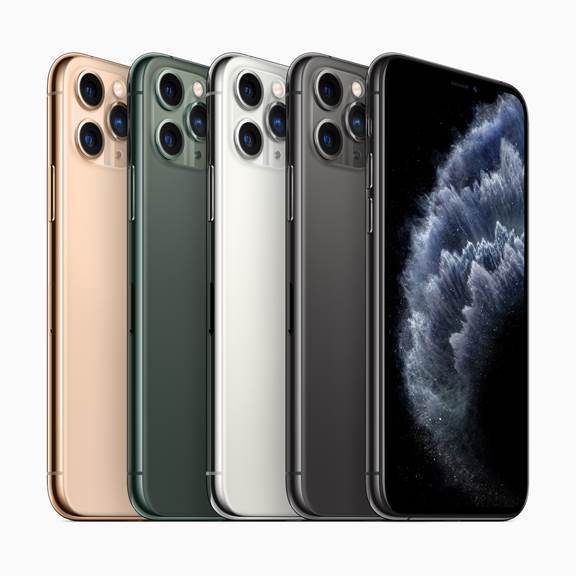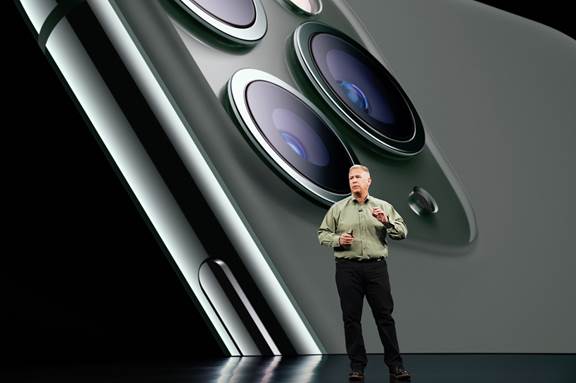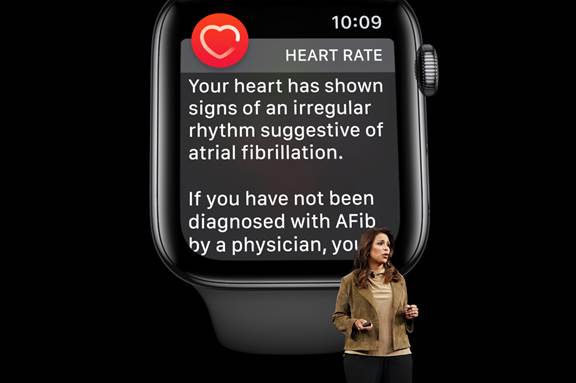Apple’s big 2019 hardware event brought a bounty of exciting announcements. Here’s our wrap up on the news that’s got our Kin buzzing.

Apple hardware event announcements in September 2019

iPhone offers on-device machine learning and improved camera capabilities, enabling new applications
It’s hard not to become cynical about the steady drum beat of annual iPhone upgrades. But a look behind the marketing pizzaz, and under the hood of new devices, tends to surface interesting shifts and exemplars of where computing is today. Most eye catching this year was the continued investment in combining powerful onboard machine learning (ML) with an array of optical sensors to create the most powerful camera most consumers will ever own. ‘Computational Photography’ is going to create a lot of great selfies, ‘slowfies’ (sorry) and movies of our pets doing the craziest things.
But it also pushes forward the power and versatility of these devices. In particular, embedded ML can increasingly offer enhanced customer experience across industries and applications. TAB’s engineers and product designers have already utilised these capabilities for applications and enhanced interactions in finance, utilities and retail. And this is just the start - embedded ML and optical sensors will enable plenty of new machine vision applications. These components are increasingly central to the mobile product tool box, and this upgraded hardware means customers will increasingly expect smarter, more proactive interactions and enhancements across all apps, not just their everyday snaps.

iPhone’s ‘Pro’ line shows how mobile usage is serving a broader range of use cases, apps and on the go tasks
Apple brought the ‘Pro’ naming signifier to the iPhone for the first time, alongside ever more hefty hardware and a bigger price tag. Mainly of course, this speaks to an increasing business need for Apple to segment their most profitable product line by consumer budget, and acquire a greater share of wallet from the large group of customers happy to pay whatever it takes to own the latest and best Apple device.
However, we believe this signals a shift to explicitly serve customers who are using their phones ‘professionally’ in some capacity. Whether for content creation or more typical enterprise tasks on the move, we see smartphones increasingly take primacy as a productivity device for some individuals. Sure, if you need to do some complex coding, media editing or financial modelling you might prefer a bigger screen or the power of a desktop or laptop (or tablet). But many smartphone users now seem to be pushing the boundaries, using modern enterprise apps (such as Slack, Zoom, or G-Suite) on the move. Case in point: I wrote this post entirely on my iPhone on a train. The growing power of smartphone hardware, and primacy of the device for individuals will mean more and more ‘work’ tasks can happen on the go.
Apple Watch continues to show off the potential for sensors to safeguard health and improve wellbeing
The most compelling Apple announcement came in the form of the glut of medical research studies now using the Apple Watch’s data. Apple are about to release results around female reproductive health tracking and associated osteoporosis risks, as well as studies into ambient noise and cardiology. More generally, Apple are opening up the Watch’s medical research platform for mass participation, giving researchers access to these new large, longitudinal datasets. As the Watch’s sensors and capabilities grow, and the number of people sharing their data increases, medical science and specific underserved areas like women’s health and mental healthcare are likely to see further improvements and hopefully better health outcomes. And as consumers become more engaged in tracking their health behaviours, they’re going to start expecting the health ecosystem to do more valuable things for them based on that data.

New Apple Watch hardware suggests that it continues to be the best bet for replacing your smartphone in the future – just not yet
Apple hardware event confirm the watch itself got a general hardware upgrade, as expected. This consisted of bringing more sensors and enhancements to day to day usability in the form of battery life, always-on display and a refresh of the Watch’s operating system. Short term, this doesn’t change much, and we don’t expect an explosion of Watch specific apps any time soon. Long term though, it’s clear Apple sees the device as part of the answer to the existential question for the business - ‘what comes after the smartphone?’. Even if it’s not a watch in form factor, all future digital transformation and devices will benefit from the advancements in hardware miniaturisation, power management and sensor enabled interactions pioneered here.
Apple continue to pivot to subscription-based services to drive retention, revenue and hardware upgrades.
As smartphones reach saturation point, services ‘on top’ of Apple’s core hardware business are becoming critical for profitability and to drive customers to upgrade their devices as regularly as they did a number of years ago.
Apple TV+ won’t immediately be a match for Netflix, or for Disney’s forthcoming streaming service. But offering it bundled with new devices for a year makes Apple TV effectively ‘free’ for anyone who keeps upgrading their hardware, and that revenue kick might be enough to get Apple’s content production budget flywheel spinning. In games, Apple already has a huge audience, but would prefer fewer freemium games (the likes of candy crush and Fortnite) which can sometimes leave parents with huge iTunes bills. Arcade encourages more of the artistic, creative end of the indie games spectrum to prosper, and keeps a lid on the bills too.